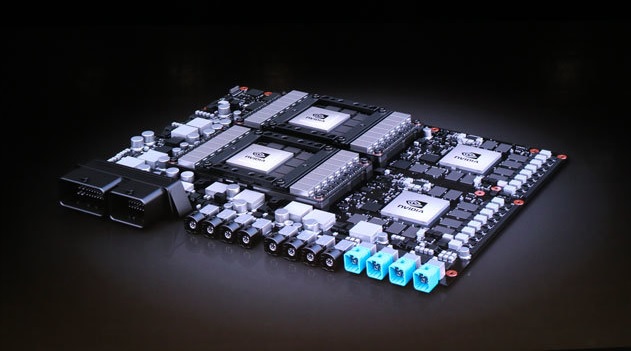Infineon Technologies AG expanded its safe automated driving collaboration with NVIDIA, announcing that its AURIX TC3xx series automotive microcontroller (MCU) will be used in the NVIDIA DRIVE Pegasus AI car computing platform. The supercomputer for autonomous vehicles meets the requirements of Level 5 autonomous driving as defined by the Society of Automotive Engineers (SAE).
Infineon now supplies the safety microcontroller, safety power supply IC, and selected vehicle communication interface ICs for several NVIDIA DRIVE systems. The devices support increasing levels of autonomous driving capability, ranging from auto cruise functionality to auto chauffeur and full autonomy.
Development time reduced by up to 40 percent
The collaboration enables users of the platform to access AURIX capabilities through an AUTOSAR-compliant software stack. This potentially allows re-use of higher-level application code and can likely reduce development time by 20 percent to 40 percent compared to traditional platforms.
“Infineon has a 30+ year history of delivering the safety and reliability technology that is critical at all levels of autonomous driving. We make cars safer, smarter and greener,” said Ritesh Tyagi, Head of the Silicon Valley Automotive Innovation Center (SVAIC) at Infineon. “Collaboration between Infineon and NVIDIA through multiple generations of DRIVE car computers provides the automotive industry with a consistent platform for development and market deployment across all classes of driver-assist and fully autonomous systems.”
“NVIDIA’s DRIVE AI vehicle supercomputers deliver up to 100-times more computational horsepower than the most advanced cars on the road today,” said Gary Hicok, Senior Vice President of Hardware Development at NVIDIA. “Their multiple levels of redundancy and safety functionality demand a proven, widely deployed safety architecture, like that of the AURIX TC3xx series.”
Infineon microcontrollers power automated driving
The multicore microcontrollers help the platform meet the highest possible functional safety standard (ISO 26262 ASIL-D) for Advanced Driver Assistance Systems (ADAS) and self-driving systems. The AURIX TC3xx series offers significant upgrades in performance compared to the previous generation to enable scalable and efficient platforms. Key features of the AURIX microcontrollers are relevant to implementing both ADAS and Automated Driving (AD) functionality. That includes advanced support for ASIL-D applications assisted by more than 3,000 DMIPS of safety computational performance, self-test mechanisms in hardware for logic and memory, integrated monitoring, and redundant peripherals. In addition, the latest generation of AURIX offers a greater level of integration, enhancements in high-speed connectivity interfaces, and advanced security capabilities.
The microcontroller handles a key layer of the safety supervision framework of the platform and performs monitoring functions for the SoC. In turn, AURIX plays an important role for DRIVE Pegasus to achieve system-level ASIL-D safety. It also manages the power-up sequence and monitoring of warning signals for the self-driving platform. In addition, the AURIX microcontroller provides the main in-vehicle interfaces for multiple network communication channels to the system, such as CAN FD, Gigabit Ethernet, and FlexRay.
More Information
Information on the AURIX microcontrollers and Infineon’s automotive product portfolio is available at www.infineon.com/aurix and at www.infineon.com/automotive. Visit Infineon at CES 2018 (Consumer Electronics Show, 9-12 January 2018, Las Vegas, MP26065 in South Hall 2 of the Las Vegas Convention Center).






